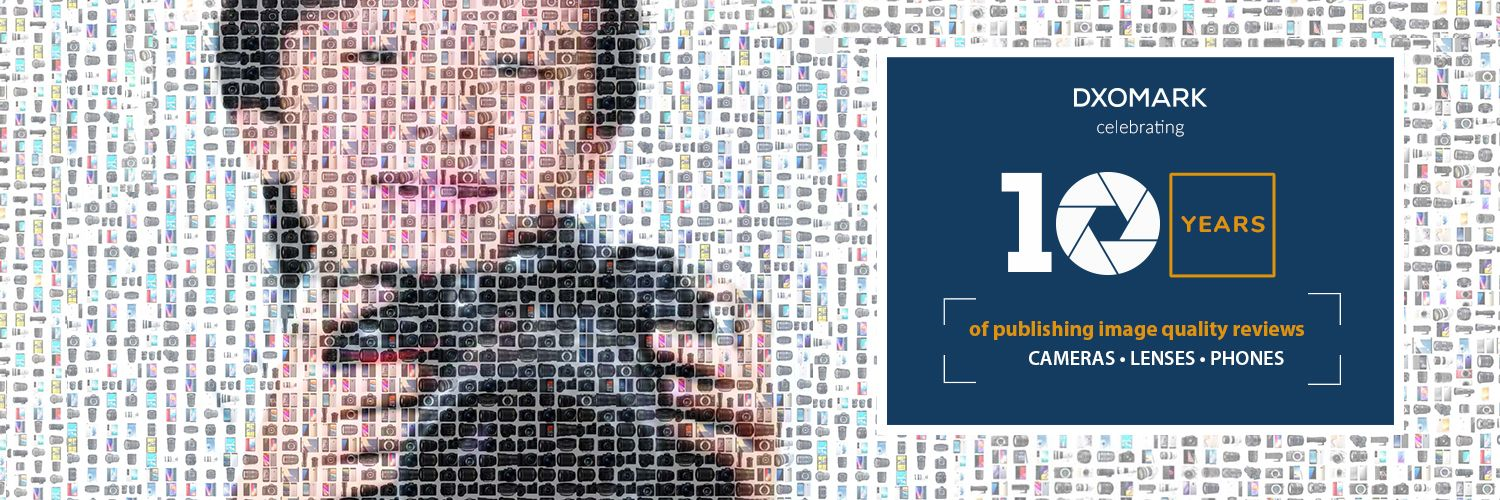
As 2019 begins, we’d like to recap the various smartphone cameras we tested last year. In 2018, we put 31 devices, covering entry-level, mid-range, and high-end models, through our DxOMark Mobile laboratory and real-life test procedures.
The results were impressive. We saw the 100-point barrier cracked for the first time, with the top cameras achieving improved results in all test sub-categories. It’s also fair to say that 2018 was the year of the multi-camera smartphone. At 109 points, the Huawei P20 Pro with its triple camera is the current leader in the DxOMark Mobile ranking, followed by five multi-camera devices, including the Apple iPhone XS Max and the Samsung Galaxy Note 9.
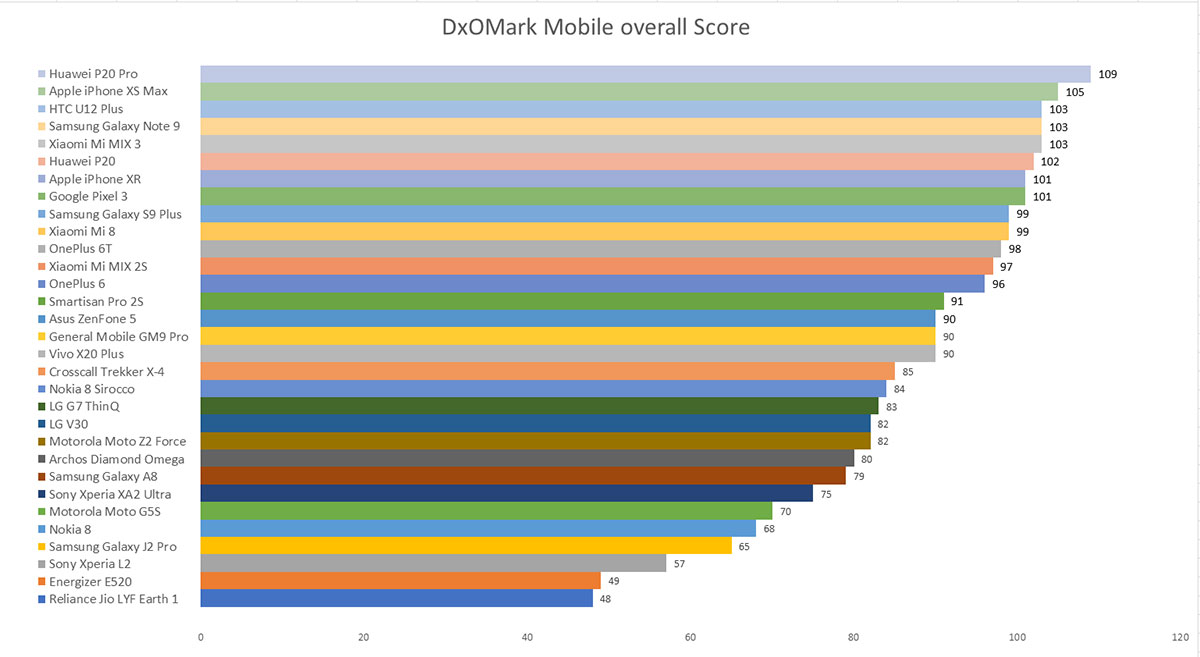
At 101 points, the Google Pixel 3, the successor to the Pixel 2 (the top-ranked device at the end of 2017), and the Apple iPhone XR are the top single-lens cameras in our ranking. Both cameras are capable of achieving excellent results in most situations, but it’s pretty clear that multi-camera setups are the way to go, especially if you require the best possible zoom and bokeh simulation performance.
If we dive a little deeper and look at Photo and Video scores separately, we can see that—unsurprisingly—the top overall devices also tend to be among the best in the Photo and Video sub-categories. However, if you are mainly a still photographer and only very occasionally shoot video (or vice versa), it’s worth making sure that you find the best device for your purposes. The Samsung Galaxy S9 Plus, for example, is a better stills camera than some of the devices that scored higher in the overall ranking. Similarly, the Google Pixel 3 ties with the Huawei P20 Pro for the best video performance (98 points), but is ranked only seventh overall.
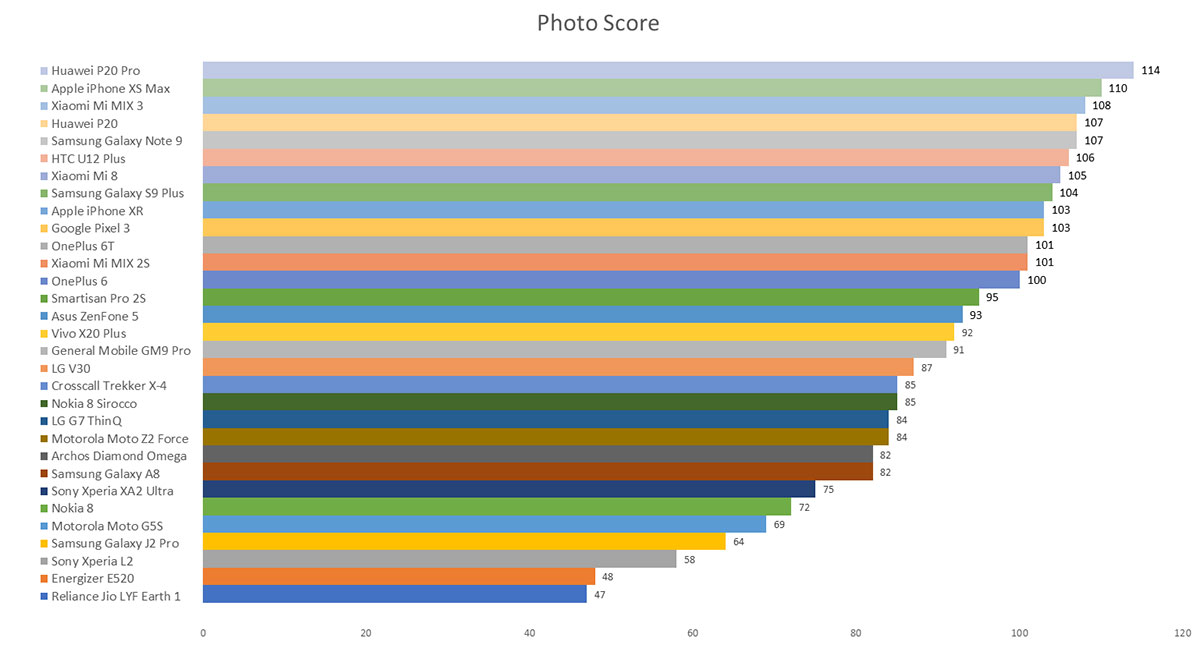
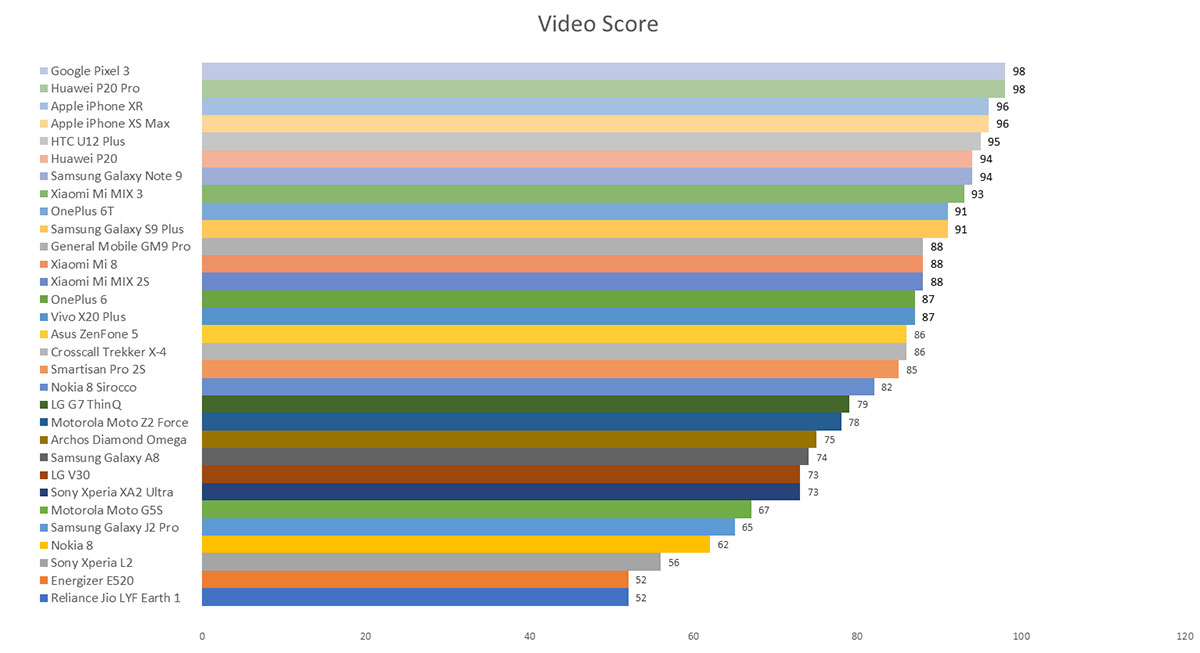
We also saw that you can get decent smartphone camera performance without spending a lot of money. Mid-range models such as the Viva X20 Pro, the Smartisan Pro 2S, and the Zenfone 5 did reassuringly well in our tests. As one would expect, there’s still the most room for improvement in the entry-level segment, where devices such as the Reliance Jio LYF Earth 1, the Sony Xperia L2, and the Samsung Galaxy J2 Pro were able to capture usable image and video results in good light, but struggled in more challenging conditions.
2018 was a very busy year for our testing team. With the move to our new premises, we experienced a temporary shortfall in our testing capacity, and as a result we tested fewer devices in 2018 than we would have liked, particularly lenses and cameras. With the new facilities all set up now and running at full speed, we expect a much higher publishing rate in the new year. We remain committed to testing lenses and cameras as well as smartphone cameras, and will get back to publishing new reviews soon. So keep an eye on our website as we both work through the backlog and tackle new models alike in the New Year!
Check out our latest video on how we installed our new labs.
Wishing you all a splendid 2019,
The DxOMark Team


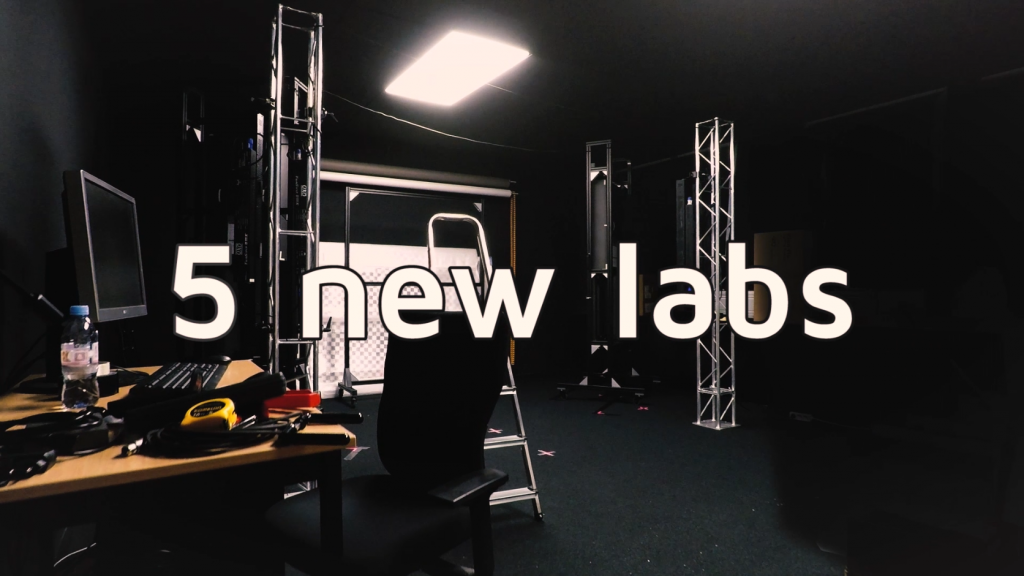
DXOMARK encourages its readers to share comments on the articles. To read or post comments, Disqus cookies are required. Change your Cookies Preferences and read more about our Comment Policy.